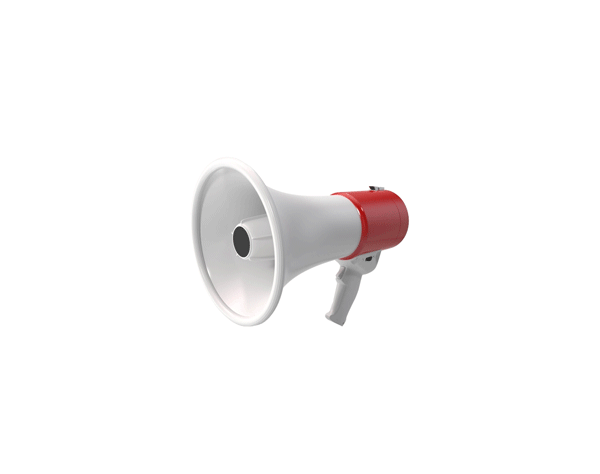Advertisement
On Politics Media Watch
President Trump’s baseless “Obamagate” charge illustrates how disinformation bubbles from the internet.
Hi. Welcome to On Politics, your guide to the day in national politics. I’m Nick Corasaniti, your host on Tuesdays for our coverage of all things media and messaging.
Sign up here to get On Politics in your inbox every weekday.

Though it seems like a new phrase blaring from President Trump’s Twitter megaphone and the news coverage that follows, the disinformation-meets-conspiracy theory cocktail known as “Obamagate” has origins that date to Barack Obama’s first presidential campaign.
It has acted as a catchall phrase for Mr. Obama’s online enemies whenever they perceived wrongdoing, particularly in the aftermath of the 2012 attacks on the U.S. consulate in Benghazi, Libya. Yet it has remained largely dormant for years, passed around only on the fringes of internet message boards and social media platforms, save the occasional flare-up on Fox News or conservative radio. Now the term has become a vessel for the president to fill with undefined and unsubstantiated charges against his predecessor.
Understanding how disinformation metastasizes is vital to the digital campaign world that we’re living in. To map out how this conspiracy theory spread, I turned again to my colleague Ben Decker, a researcher who works with The New York Times and helps us make sense of all the digital noise.
Attaching a “-gate” suffix to a political nemesis’s name may seem obvious. But the rapid, viral and organic spread of Obamagate followed an increasingly common playbook for those seeking to sow chaos and confusion. This conspiracy theory starts with a grass-roots groundswell, often within conspiracy-minded message boards, and bubbles on Twitter (where like-minded accounts only really talk to each other). But then it gets picked up by a widely followed Twitter account (usually one with a “verified” blue check mark) and is amplified by other verified partisan accounts. Then the mainstream media notices, and it’s off to the races.
Here is a step-by-step look that Ben and I put together of how the rise and spread of the Obamagate conspiracy has played out.
2017: The embers burn
Usage of Obamagate spiked in March 2017, after Mr. Trump had been in office for less than two months, when he falsely tweeted about his phones having been wiretapped. The phrase was used by partisan media outlets like Breitbart and in conspiracy communities like QAnon as a means of describing the “deep state” and pinning the blame on Mr. Obama for any troubles that befell Mr. Trump.
Search interest in the phrase peaked again in January 2018 amid news reports about the investigation by the special counsel Robert S. Mueller III. The #obamagate hashtag was eventually tweeted by Donald Trump Jr., the president’s eldest son, on Feb. 2, and showed up later that month in a QAnon post on 8chan.
Ben notes that the first family has a history of amplifying QAnon-related content on social media. In August 2019, the Trump campaign released a “Women for Trump” video that featured Trump fans holding QAnon signs, and in December 2019, the president retweeted a QAnon video featuring one of the conspiracy narrative’s most popular hashtags.
Otherwise, interest in the term remained largely on the fringes until this month, when Mr. Trump and his circle began using it. In the past month, search interest for the term has been exponentially greater than at any point in its history.
April 2020: Blue check marks and coordinated pages
Lawyers for Mr. Trump’s former national security adviser Michael Flynn set right-wing news and social media networks abuzz in mid-April, when they claimed that the Justice Department had found “stunning” evidence of F.B.I. misconduct. (Mr. Flynn had twice pleaded guilty to lying to the F.B.I. about his conversations with a Russian diplomat.)
But the Obamagate term began to spread rapidly after The Daily Wire, a popular conservative website with a blue check mark on Facebook, used the phrase in a Facebook show discussing the criminal case against Mr. Flynn. The video, posted on April 28, was viewed nearly 160,000 times on Facebook and was shared more than 1,200 times.
The next day, Sebastian Gorka, a popular figure among Mr. Trump’s online following, spent an hour of his “America First” radio show discussing similar Obamagate conspiracy theories. His show was viewed more than 533,000 times on YouTube.
And the verified Twitter account for The Gateway Pundit, another right-wing site, picked up on the phrase in a post highlighting a 2018 article on the deep state conspiracy, sharing it with nearly 260,000 followers.
Ben notes that networks of Facebook pages coordinating pro-Trump messaging is a tactic seen consistently through the last two election cycles by both domestic and foreign information operations, as well as conspiracy communities. This particular network includes at least 27 Facebook pages with a combined audience of over 900,000 Facebook users. While the number may seem relatively small, it enables disinformation actors to strategically propagate content.
Two days after the Justice Department made its announcement about Mr. Flynn’s case, Mr. Trump joined the Obamagate chorus with a single-word tweet. He has repeated the term in at least 10 other tweets.
May 2020: Mass reach
Mainstream media outlets have tried to explain what the president meant in his Obamagate! tweets — and, in so doing, have helped make the phrase mainstream.
Since May 1, there have been at least 245 mentions of the phrase Obamagate on cable news, according to data from TVEyes, and thousands more on local and national network news (when a national news show runs on local affiliates, some mentions may be counted multiple times).
At a White House news conference on May 11, Mr. Trump was asked by a reporter to explain the term, but he did not directly answer the question or specify an allegation against Mr. Obama — offering only that “some terrible things happened.”
Widespread coverage also helps provoke responses from the opposite side of the political spectrum, which helps keep the conspiracy theory in the zeitgeist.
“The right is getting an enormous amount of signal boosting from center-left reporting, for example, and also people on the left who are reacting to all the conspiracy theory stuff that’s going on right now,” said Whitney Phillips, an assistant professor of media studies and communication at Syracuse University. “There’s a certain percentage of the population that really believes in Obamagate, but that circulates in large part because people on the left are reacting to it.”
Mr. Trump has continued to tweet out the phrase, part of what my colleague Peter Baker notes is a penchant for blaming Mr. Obama for any perceived failures of the Trump administration. Mr. Obama, for his part, hasn’t directly responded, but he did issue a one-word tweet of his own last week: “Vote.”
Drop us a line!
We want to hear from our readers. Have a question? We’ll try to answer it. Have a comment? We’re all ears. Email us at onpolitics@nytimes.com.
Michigan, a key battleground state in the presidential race, will mail absentee ballot applications to all registered voters for its congressional and legislative primary elections in August and the general election in November.
The goal of the move, officials said, is to help mitigate the spread of the coronavirus, which has hit Michigan particularly hard. The decision takes advantage of the state’s new rule, passed by voters in 2018, that allows all voters to cast absentee ballots.
“By mailing applications, we have ensured that no Michigander has to choose between their health and their right to vote,” said Jocelyn Benson, Michigan’s secretary of state, who is a Democrat.
Increasing absentee and mail-in voting in the midst of the coronavirus pandemic is being studied by states across the nation, but has come under withering criticism from President Trump and Republicans, who have announced plans to devote millions of dollars to fight efforts to loosen restrictions on voting.
Though previous studies have shown that all-mail voting does not confer an advantage to Democrats, a liberal candidate for Wisconsin’s Supreme Court won mail votes by a substantial margin last month.
Increased turnout through mail-in voting could be particularly troubling for Republicans in key battleground states like Michigan, Wisconsin and Pennsylvania, where Mr. Trump won in 2016 by tiny margins, delivering the electoral votes he needed to win the White House.
In Michigan’s March 10 presidential primary, half of the 2.3 million people who cast ballots used the absentee route. And elections officials reported that 99 percent of people who voted in local elections on May 5 used absentee ballots, increasing turnout to 25 percent from an average of 12 percent for Michigan’s May elections over the last nine years.
Local clerks in Michigan already send out absentee ballot applications to 1.3 million voters, but the state will mail applications to the rest of the state’s 7.7 million registered voters, using $4.5 million in federal funds allocated to the state through the federal stimulus package passed in March.
Both Wisconsin and Pennsylvania allow anyone to cast absentee or mail-in ballots. The Wisconsin Election Commission is scheduled to meet Wednesday and will decide if the state will send absentee ballot applications to all of the state’s 3.3 million registered voters.
— Kathleen Gray
Thanks for reading. On Politics is your guide to the political news cycle, delivering clarity from the chaos.
On Politics is also available as a newsletter. Sign up here to get it delivered to your inbox.
Is there anything you think we’re missing? Anything you want to see more of? We’d love to hear from you. Email us at onpolitics@nytimes.com.



